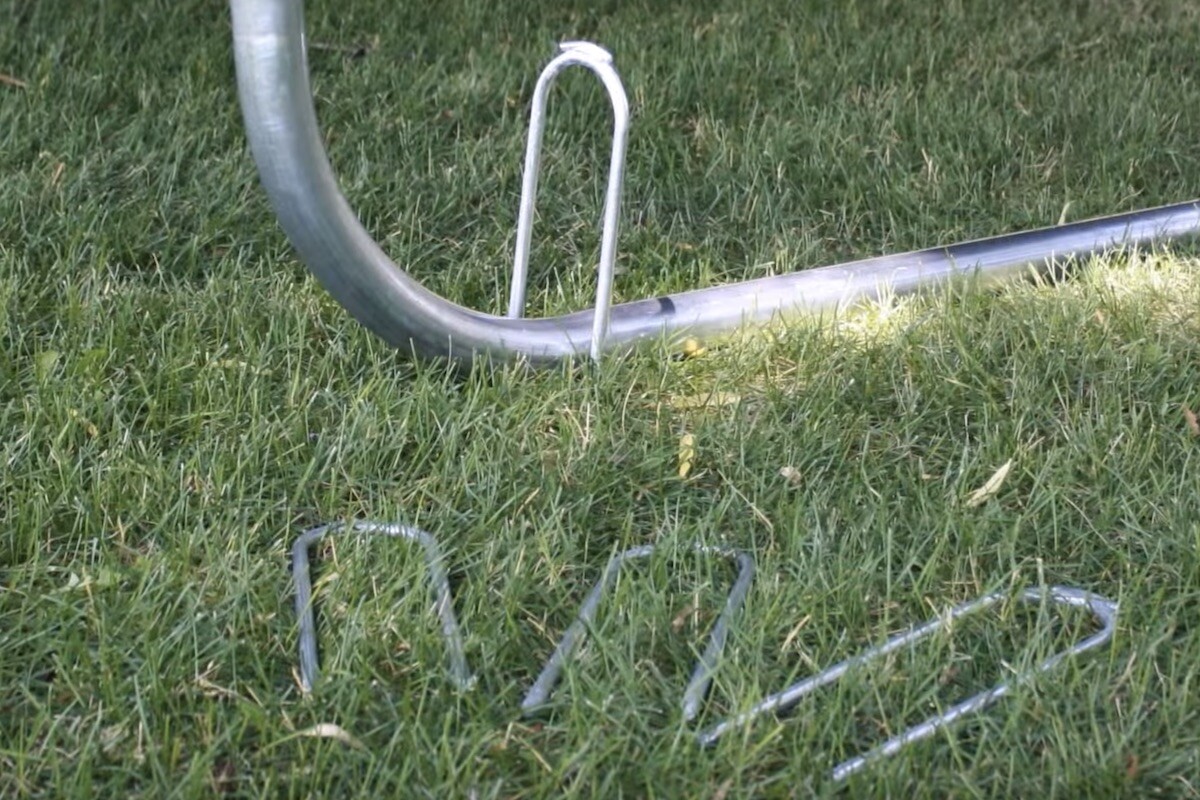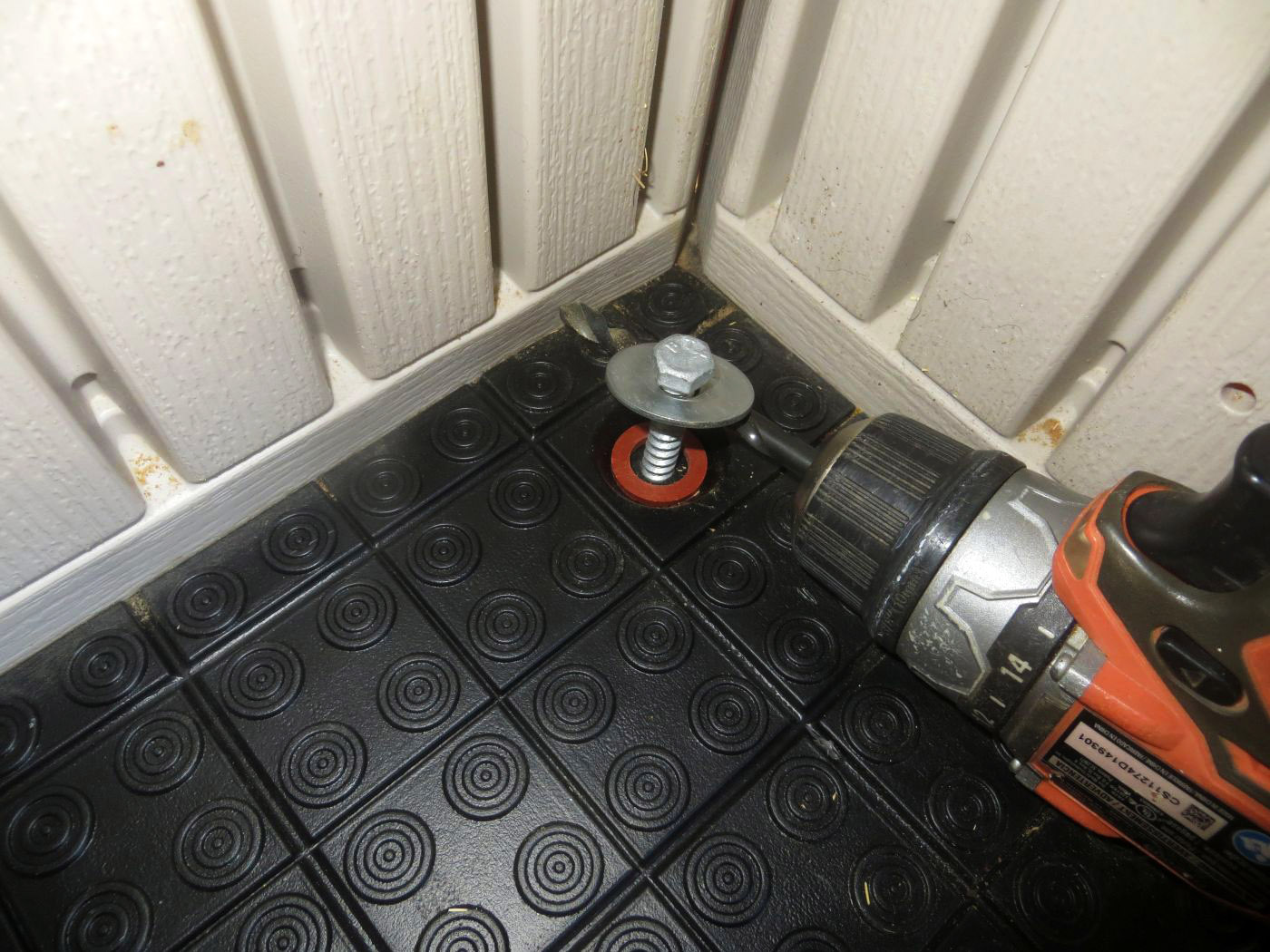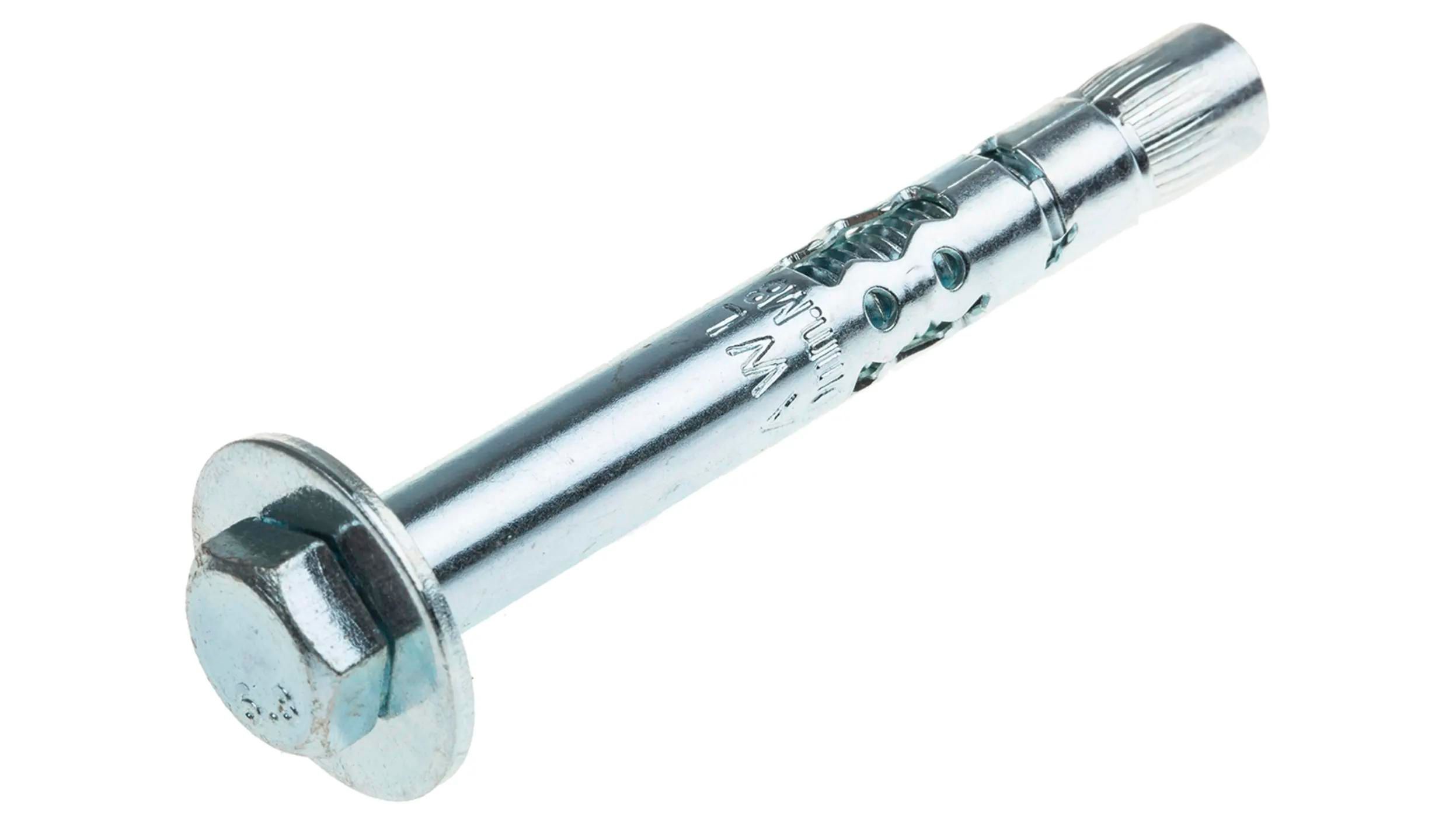

Articles
How To Store Anchor Charts
Modified: December 7, 2023
Learn the best methods for storing anchor charts and keep your articles organized and accessible. Find tips and ideas to preserve and maintain your valuable teaching resources.
(Many of the links in this article redirect to a specific reviewed product. Your purchase of these products through affiliate links helps to generate commission for Storables.com, at no extra cost. Learn more)
Introduction
Anchor charts play a crucial role in classrooms and other educational settings by serving as visual aids that help reinforce concepts and facilitate learning. These charts are typically large posters or diagrams, often created collaboratively by teachers and students, that summarize and visually represent key information, strategies, or procedures. Whether it’s a math concept, a grammar rule, or a writing process, anchor charts provide a tangible reference point for students to refer back to during lessons and activities.
However, with the plethora of anchor charts that are created throughout the school year, the task of properly storing and maintaining them can be quite daunting. Improper storage can result in damage, loss, or deterioration of these valuable resources, rendering them ineffective for future use.
In this article, we will explore the importance of storing anchor charts, discuss factors to consider before storing them, provide a step-by-step guide on how to store them effectively, and offer tips for maintaining their quality over time.
By implementing proper storage techniques, teachers can ensure that their anchor charts remain in good condition, ready to be used in future lessons and activities. Let’s delve into the world of anchor chart storage and discover how to preserve these valuable teaching tools for years to come.
Key Takeaways:
- Properly storing anchor charts is crucial for accessibility, reusability, and maintaining consistency in teaching. By following a step-by-step guide and considering factors like size and material, educators can ensure the longevity of these valuable resources.
- Implementing tips for maintaining the quality of anchor charts, such as handling with care and controlling environmental factors, can preserve their usability over time. By documenting and archiving their content digitally, educators can ensure their longevity beyond physical copies.
Read more: How To Anchor In Brick
Importance of Storing Anchor Charts
Properly storing anchor charts is essential for several reasons:
- Accessibility: Storing anchor charts in an organized and accessible manner ensures that they are readily available when needed. As teachers, we know that having quick access to visual aids can save precious instructional time and help reinforce concepts effectively.
- Reusability: Anchor charts are often created to address essential concepts that are taught year after year. By storing them properly, teachers can reuse these valuable resources in future lessons, saving time and effort in recreating them.
- Consistency: Consistency in teaching is crucial for student comprehension and retention. By storing anchor charts, teachers can maintain consistency in their instruction by using the same visual cues and references across different classes and instructional periods.
- Reflection and Evaluation: Storing anchor charts allows teachers to reflect on their instructional practices and evaluate the effectiveness of the visuals used. By revisiting these charts over time, educators can make improvements, modify content, and refine their teaching strategies.
- Accountability: In certain educational settings, such as schools undergoing accreditation or external evaluations, providing evidence of instructional materials and resources is crucial. Storing anchor charts in a well-organized manner ensures that they can be easily accessed and presented when required.
By recognizing the importance of storing anchor charts, educators can prioritize their maintenance and find effective storage solutions that fit the specific needs of their classroom environment.
Factors to Consider Before Storing Anchor Charts
Before you start storing your anchor charts, there are several factors to consider to ensure their long-term preservation:
- Size: Anchor charts come in various sizes, from small charts that fit on a standard sheet of paper to large posters that cover an entire wall. Consider the size of your anchor charts to determine the storage options that can accommodate them.
- Material: Take into account the material used to create the anchor charts. Paper-based charts may require different storage solutions compared to those made on laminated or foam boards. The material will dictate how you handle and protect them from damage.
- Usability: Consider how frequently you will need to access the anchor charts. If they are used regularly, opt for storage solutions that provide easy and quick access. On the other hand, if they are for long-term storage, you may choose options that prioritize protection over accessibility.
- Storage Space: Assess the available storage space in your classroom or office. Determine if you have suitable areas to dedicate to storing anchor charts, such as shelves, cabinets, or filing units.
- Climate Control: Environmental factors, such as humidity, temperature fluctuations, and exposure to sunlight, can impact the longevity of anchor charts. Consider storage solutions that provide protection against these elements to prevent fading, warping, or damage.
- Labeling and Organization: Develop a labeling and organization system to categorize and identify your anchor charts easily. Consider using labels, dividers, or color-coding techniques to streamline the storage and retrieval process.
- Security: If you store anchor charts outside of the classroom, such as in a shared storage room, consider the security measures in place to protect them from theft or damage.
By carefully considering these factors, you can make informed decisions about the storage options that best suit your specific needs and ensure the longevity of your anchor charts.
Step-by-Step Guide on How to Store Anchor Charts
Proper storage of anchor charts is essential to ensure their longevity and accessibility. Follow this step-by-step guide to effectively store your anchor charts:
- Assess and categorize: Evaluate your anchor charts and categorize them based on subject, topic, or grade level. This will help you determine the quantity and size of storage materials you will need.
- Choose storage materials: Select appropriate storage materials based on the size and material of your anchor charts. Options include file folders, plastic sleeves, binders, or storage bins. You may also consider using hanging file folders or magazine holders for larger charts.
- Prepare the storage materials: Label your storage materials with the corresponding category or topic to ensure easy identification. If using binders or folders, consider using dividers to separate different anchor charts.
- Organize and insert anchor charts: Place the anchor charts in the designated storage materials, ensuring they fit properly without any folds or creases. Arrange them in an order that makes sense to you, such as chronological or alphabetical.
- Store in a suitable location: Find a suitable location in your classroom or office to store your anchor charts. Consider factors like accessibility, protection from sunlight and moisture, and available space.
- Maintain and update: Regularly maintain your storage system by ensuring that charts are properly inserted, labeled, and categorized. Update as needed when creating new charts or retiring old ones.
- Create a catalog: Consider creating a catalog or index that lists all the anchor charts you have stored, including their location and category. This will make it easier to find specific charts in the future.
- Monitor and assess: Periodically assess the condition of your anchor charts to ensure they are still usable and in good condition. Replace damaged or faded charts as needed to maintain their effectiveness.
Following these steps will help you keep your anchor charts organized, easily accessible, and in good condition, ensuring they remain valuable resources for future lessons and activities.
When storing anchor charts, roll them up instead of folding to prevent creases. Store in a tube or large envelope to keep them flat and protected.
Choosing the Right Storage System
Choosing the right storage system for your anchor charts is essential to ensure their long-term preservation and easy accessibility. Consider the following factors when selecting a storage system:
- Size and capacity: Determine the size and quantity of anchor charts you need to store and choose a storage system that can accommodate them comfortably. Consider factors like the dimensions of the storage unit, the number of charts it can hold, and the scalability for future additions.
- Material and durability: Ensure that the storage system is made of sturdy and durable materials to protect your anchor charts from wear, tear, and damage. Look for options that are resistant to moisture, dust, and sunlight exposure.
- Accessibility: Consider how easily you can access and retrieve the anchor charts from the storage system. Look for designs that allow for easy flipping or browsing through the charts without causing any damage or disorganization.
- Protection: Opt for storage systems that provide adequate protection against environmental factors like humidity, temperature fluctuations, and exposure to sunlight, which can cause fading, warping, or deterioration of the charts over time.
- Organization: Choose a storage system that enables you to categorize and organize your anchor charts effectively. Look for options with compartments, dividers, or labels to easily locate specific charts when needed.
- Portability: If you need to transport or share your anchor charts with other teachers or colleagues, consider storage systems that are lightweight and easy to carry. Look for options with handles or wheels for added convenience.
- Aesthetic appeal: While functionality is vital, the storage system’s aesthetic appeal can also enhance the overall classroom environment. Look for options that complement your classroom décor and create a visually appealing display of the anchor charts.
- Budget: Consider your budget when choosing a storage system. There are a variety of options available at different price points, so find one that meets your needs without exceeding your budget.
Ultimately, the right storage system for your anchor charts will depend on your specific requirements and preferences. Take the time to research different options, read reviews, and consider the unique needs of your classroom to make an informed decision.
Read more: How To Anchor Into Stucco
Tips for Maintaining the Quality of Anchor Charts
Maintaining the quality of your anchor charts is essential to ensure their effectiveness and longevity. Follow these tips to keep your anchor charts in top condition:
- Handle with care: When handling anchor charts, ensure clean and dry hands to avoid transferring oils or moisture onto the paper. Hold them gently to prevent tearing or creasing.
- Protect from damage: Place anchor charts in protective sleeves, laminating them, or using clear contact paper to guard against spills, stains, and general wear and tear. This will also make them easier to clean and maintain.
- Avoid direct sunlight: Sunlight can cause fading and deterioration of anchor charts over time. Store them in a location away from direct sunlight exposure to preserve their colors and integrity.
- Control humidity and temperature: High humidity levels can lead to mold growth and warping of paper-based anchor charts. Maintain a controlled climate in the storage area to prevent damage caused by excessive moisture or extreme temperature fluctuations.
- Keep away from moisture: Water damage can ruin anchor charts. Store them in areas where they are protected from leaks, spills, or excessive humidity. Consider using moisture-absorbing packets or dehumidifiers in the storage area.
- Regular cleaning: Dust and dirt can accumulate on anchor charts, affecting their readability and overall appearance. Regularly clean them by gently dusting with a soft, dry cloth or using a mild cleaning solution and a soft brush for laminated charts.
- Proper storage: Follow the storage guidelines outlined in the earlier section and use appropriate storage materials to protect anchor charts. This includes using acid-free sleeves, folders, or bins that are designed for long-term preservation of paper-based materials.
- Rotate and reuse: To prolong the life of your anchor charts, consider rotating their use throughout the school year. This allows for equal wear and minimizes the risk of damage from excessive handling.
- Regular maintenance: Periodically check on the condition of your anchor charts. Replace or repair any charts that are damaged or faded. Update them as needed to reflect current content standards or instructional practices.
- Document and archive: To preserve the ideas and information depicted on anchor charts, consider taking digital photos or creating digital copies. This allows for easy access, reprinting, and archiving, ensuring their longevity beyond physical copies.
By implementing these tips, you can maintain the quality and usability of your anchor charts, ensuring they remain valuable teaching resources for years to come.
Conclusion
Effectively storing and maintaining anchor charts is crucial for teachers and educators to preserve these valuable teaching tools for future use. By prioritizing proper storage techniques and following the steps outlined in this article, you can ensure the longevity and accessibility of your anchor charts.
The importance of storing anchor charts lies in their accessibility, reusability, consistency, reflection and evaluation, and accountability. By having quick access to these visual aids, teachers can save instructional time and reinforce concepts effectively. Additionally, by properly storing anchor charts, teachers can reuse them in future lessons, maintain consistency in instruction, reflect on teaching practices, and provide evidence of instructional materials when required.
Before storing your anchor charts, consider factors such as size, material, usability, storage space, climate control, labeling and organization, and security. Assessing these factors will help you make informed decisions about the most suitable storage options for your anchor charts.
Follow the step-by-step guide provided in this article to store your anchor charts effectively. Assess and categorize your charts, choose appropriate storage materials, organize and insert the charts, and find a suitable location for storage. Regularly maintain and update your storage system, create a catalog for easy reference, and monitor the condition of the anchor charts to ensure their usability over time.
Lastly, implement the tips for maintaining the quality of your anchor charts. Handle them with care, protect them from damage, avoid sunlight exposure, control humidity and temperature, clean them regularly, use proper storage materials, rotate and reuse them, and document and archive their content digitally.
By implementing these strategies, you can ensure the preservation and effectiveness of your anchor charts, allowing them to continue to support and enhance the learning experience of your students for years to come.
Frequently Asked Questions about How To Store Anchor Charts
Was this page helpful?
At Storables.com, we guarantee accurate and reliable information. Our content, validated by Expert Board Contributors, is crafted following stringent Editorial Policies. We're committed to providing you with well-researched, expert-backed insights for all your informational needs.















0 thoughts on “How To Store Anchor Charts”